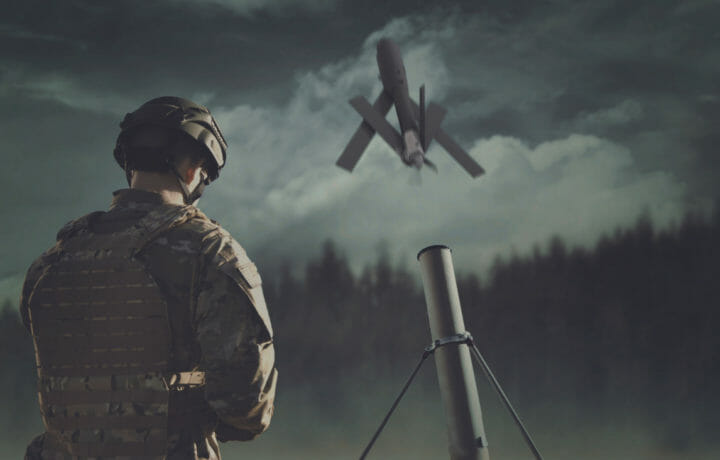No matter how the Russian-Ukraine War eventually ends, the people of Ukraine will likely remain the biggest losers, as their cities have been bombed, loved ones killed and lives destroyed. The second-biggest loser could certainly be the Kremlin – both in terms of pride and in future arms sales. As Russia failed to win a quick and easy victory, and has seen its tanks destroyed, aircraft shot down and ships sunk, the once “Mighty Bear” is quickly resembling a “Paper Tiger.”
That’s bad news for Rostec, the state-owned defense conglomerate, which likely hoped to use a quick victory to tout its various weapons. Instead, a nearly unknown American startup has gained notoriety with its seemingly small but highly capable unmanned aerial system (UAS), which has been credited with destroying Russian tanks and other vehicles.
That is AeroVironment’s Switchblade, a “loitering munition” that can be remotely operated and used to semi-autonomously target enemy positions. The United States Special Forces have reportedly been using the small drones for more than a decade, but virtually no information and no combat videos have been released. That has only served to create quite the mystique about the small kamikaze drones.
Single Shot Wonder Weapon
The original Switchblade 300 is just 5.5 pounds, and was developed as a tube-launched electric drone powered by a small electric motor. It can cruise to targets at speeds nearly 60mph, and then strike like a missile. The drone is remotely operated, and it is equipped with a camera that allows it to be used to locate a target, lock-on and then destroy it.
Unlike with man-portable anti-tank weapons, such as the American-made FGM-148 Javelin or the British-produced NLAW, the Switchblade 300 can allow an operator to maintain a safe distance from an enemy target. While it lacks the hitting power of an anti-tank rocket, it is armed with a highly directional fragmentation charge that has earned comparisons to a flying shotgun.
It also has the advantage of being able to “take out” enemy personnel while leaving a vehicle largely undamaged, and has already been used by Ukrainians to capture not destroy enemy tanks. In fact, the biggest downside of the Switchblade may be that it is a one-shot and done weapon. The drone acts as a missile and once detonated, it is destroyed.
NATO Adoption
Despite the latter fact that the weapon isn’t reusable, its success in Ukraine has served to entice U.S. allies and partners to adopt it. Earlier this month, the French Army had begun the process of procuring the loitering munitions. The Switchblade is part of an ongoing effort by the French military to field remotely operated weapons systems.
At this month’s Eurosatory Defense Expo, which took place outside of Paris, the French Army’s chief of plans, Col. Arnaud Goujon, told reporters that his nation would add the AeroVironment drone to its arsenal within the next six months.
The platform is currently in service with the United States Armed Forces and the British Armed Forces, while the Biden Administration has sent some 100 Switchblade units, consisting of around 1,000 drones to Ukraine. In addition, the Lithuanian Armed Forces have also expressed interest in acquiring the larger Switchblade 600 model.
AeroVironment has so far declined to comment on any potential sale, but a company official told Defense News this month that there has been ‘considerable interest’ in the weapon from various militaries since the United States Department of Defense (DoD) had announced plans to send the drones to Ukraine earlier this year.
Ukraine Has Been a Test Market
It isn’t surprising that the effectiveness of drones in Ukraine has been seen as a selling point for the Switchblade. The war has changed the perspective of certain weapons, notably the tank.
“Ukraine is a showcase for future war,” explained Matthew J. Schmidt, PhD, associate professor of national security and political science at the University of New Haven.
“It’s a schoolroom for the tactics you’d now see in Taiwan, and for a decade from now elsewhere,” Schmidt told ClearanceJobs. “We’ve seen future war in three theaters now that give us a glimpse of what to expect: Stuxnet in Iran, Bayaktar drones in Nagorno-Karabakh, and Switchblade in Ukraine. Our children will fight with these tools in their own wars and it will be a revolution in military affairs.”




